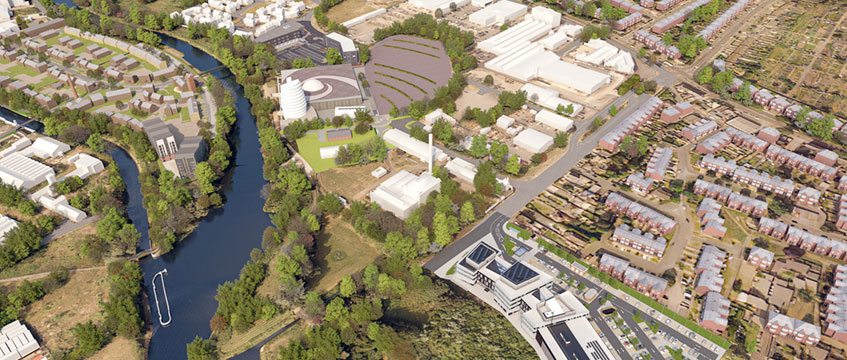Plans for a major UK cluster for space technology and research in Leicester have been launched by a partnership that includes the city’s university and the National Space Centre.
The Space City Leicester cluster aims to create one of the largest and most connected enterprise zones for space-related activities in the UK and is being promoted to potential overseas investors for the first time at MIPIM this week.
It represents up to £233m of investment in new and planned facilities on the former Pioneer Park development to the north of the city centre. This includes the University of Leicester’s science and innovation hub, Space Park Leicester, the National Space Centre visitor attraction and the flexible working space and high-tech business incubator facilities at Dock and Dock 2.
Further innovation workspace will be added at Dock 3 and newer industrial and business incubator facilities at Abbey Court.
Space City Leicester will be dedicated to space research, production, manufacture and development. However, the cluster will also look to attract non-space-related knowledge economy businesses, those working towards decarbonisation, innovative start-ups and established businesses looking for expansion space.
The Space City Leicester partnership includes Dock, Leicester City Council, Leicester and Leicestershire Enterprise Partnership, the National Space Centre, Space Park Leicester and the University of Leicester. Space City is part of the Loughborough and Leicester Science and Innovation Enterprise Zone.
Research scientists at the University of Leicester have a long and distinguished record of discovery in space science, with around 300 academics and researchers working on space and Earth observation, one of the largest groups in the UK. The existing Space Park Leicester opened a year ago and is a world-leading space and Earth observation cluster that has built a collaborative community of industry, academics and students. It is forecast to contribute £750m per year to the UK space sector over the next decade and support more than 2,500 direct and indirect jobs in the East Midlands.
Nishan Canagarajah, president and vice-chancellor of the University of Leicester, said: “This is the launch pad for an exciting new chapter in our city’s space history. From its beginnings 60 years ago at the university, we have grown space activity to unlock its huge potential to advance learning, to stimulate inward investment, innovation and growth, and to address the challenging problems of our time.”
To send feedback, e-mail julia.cahill@eg.co.uk or tweet @EGJuliaC or @EGPropertyNews
Compare and explore the Leicester market >>











